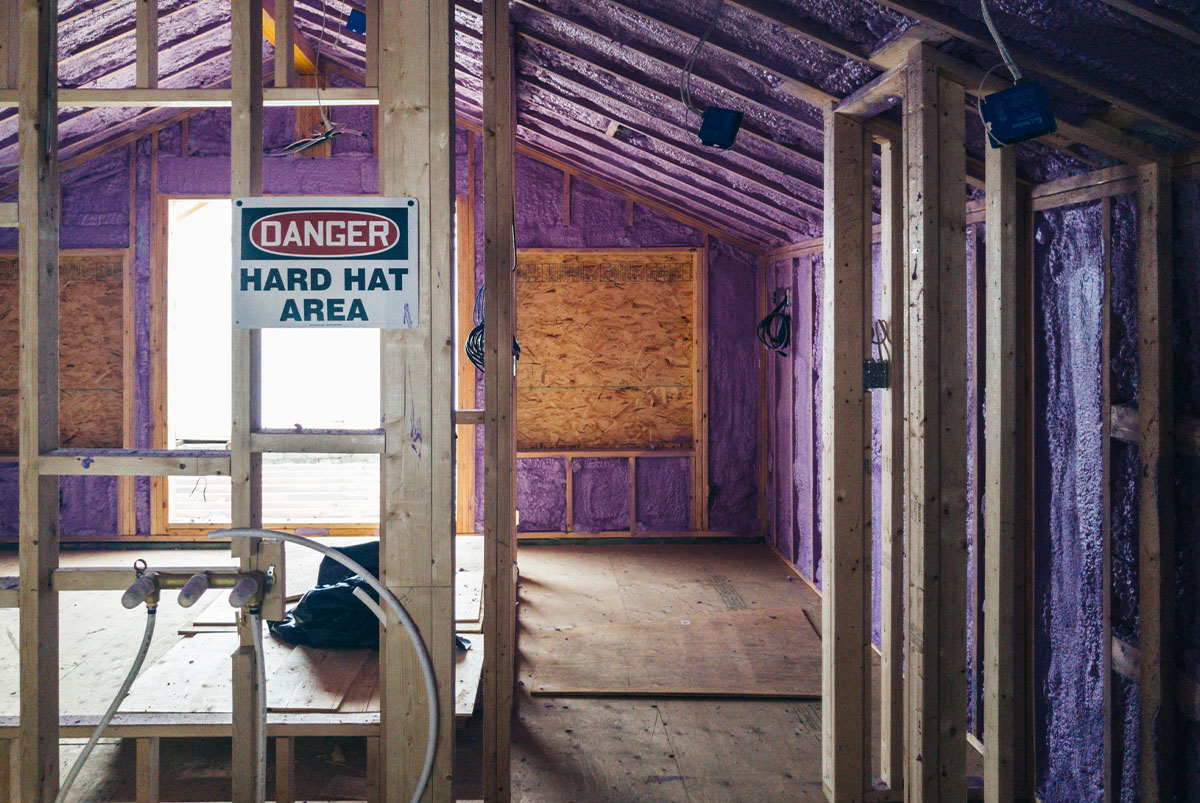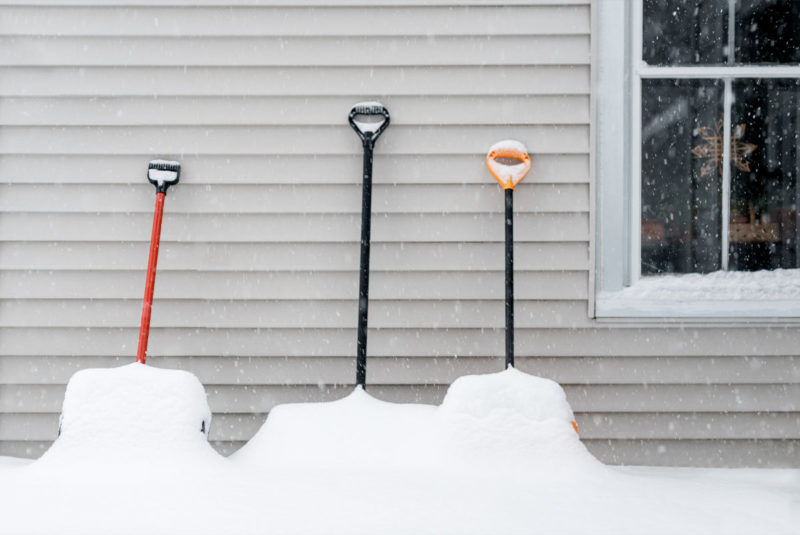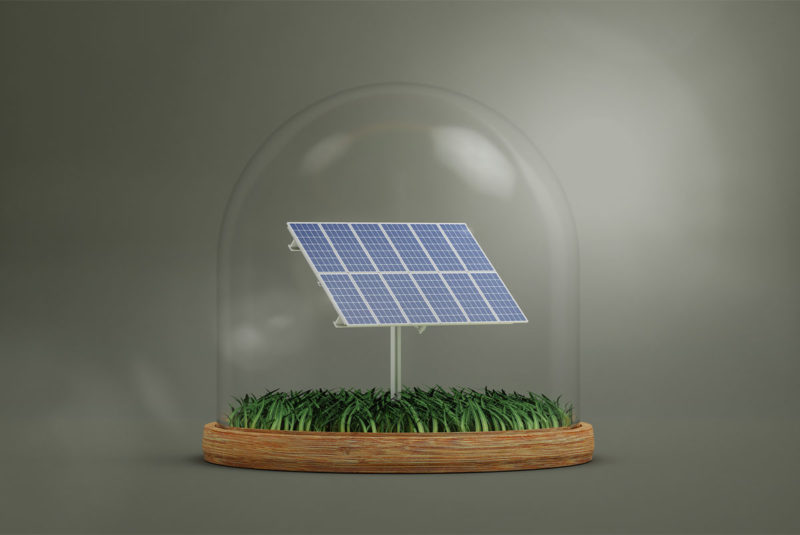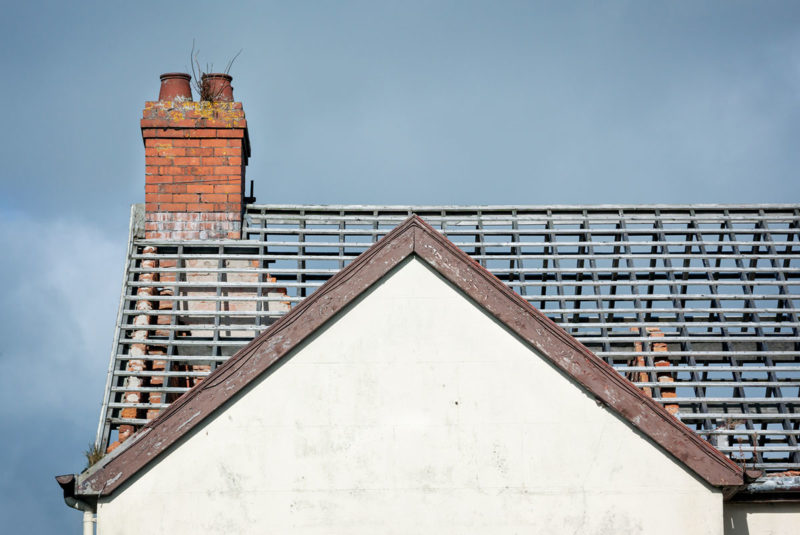Explore your mortgage options
An energy-efficient home can bring you comfort and cost savings. The first step to improving your home’s energy efficiency is insulating your walls and other areas prone to losing heat.
Today, new-construction homes have plenty of insulation and other energy-efficient features. But this wasn’t always the case. Older homes may have little or no insulation, leaving them vulnerable to air leaks and sky-high energy bills.
Even if you can’t insulate your entire house, adding any amount of insulation to your home has many benefits. We’ll explain why you should insulate your home, what steps you can take to better insulate it and the costs of some common insulation projects.
Need Funds for Home Improvements?
Apply for a home improvement loan from Rocket LoansSM and start planning your next renovation project.
Checking your options won’t affect your credit score.
Why Insulate Your Walls?
Insulating your walls is an investment in your home that can help you save on your energy bills and potentially increase your home’s resale value.
Besides the financial incentives for insulating your home, a simple reason to insulate your walls is to make your home more comfortable. Insulation works by slowing the transfer of heat, keeping heat inside your home when it’s cold outside and out of your home when it’s hot outside.
Building professionals and insulation specialists gauge the effectiveness of insulation by its R-value. R-value measures how well insulation resists heat moving through it. The higher the R-value, the better the insulation prevents heat from flowing through it, making the home more energy efficient.
Homes in different parts of the country require different R-values (ranging from R13 to R60) for insulation. The R-value is generally higher for insulation installed in attics than insulation used for walls, floors and crawl spaces.[1]
How Do You Insulate Walls Without Removing the Drywall?
Insulation is usually installed before putting up drywall. If that wasn’t the case in your home, you’ll typically need to remove your existing walls to add insulation.
But let’s suppose you want to add insulation to your home without tearing down walls. There are a couple of options to retrofit insulation, like foam-injected insulation and blown-in insulation.
Foam-injected insulation
Foam-injected insulation is an excellent insulator that is highly versatile, especially for filling tight, odd or uneven spaces.
With foam-injected insulation, spray foam adheres directly to the surface. Once installed, it’s there to stay. Spray-in foam insulation is long-lasting and strong, filling cracks and creating a tight seal that insulates your home and helps keep insects, rodents and other pests where they belong – outside your home.
While foam-injected insulation is one of the best ways to insulate a home – it isn’t cheap. Expect to pay between $2 and $5 per square foot for spray-in foam insulation.[2] Because foam-injected insulation involves drilling small holes into walls, you’ll also need to account for the cost of patching and painting your walls once the insulation installation is complete.
Blown-in insulation
Blown-in insulation (aka loose-fill) works by drilling a hole and blowing in insulation that settles to fill spaces in attics and between walls and joists. This type of insulation usually uses recycled materials, such as cellulose (newspaper), fiberglass or mineral wool.
Blown-in insulation can be a bit pricey. On average, it can cost between $1,500 and $2,250 to insulate a 1,500-square-foot home.[3]
The advantages of blown-in insulation include fire resistance, the ability to fill hard-to-reach spaces and excellent noise insulation. The drawbacks are that it can be pretty messy and, because it can move and settle over time, it might create gaps in your home’s insulation coverage.
Home Improvement Is Worth It
Prequalify for a personal loan from $2,000 to $45,000 from Rocket LoansSM and make your dream home a reality.
What Can You Do To Better Insulate Your Home?
Insulating your home’s walls is an important part of improving your home’s energy efficiency – but it isn’t the only thing you can do to improve your home’s insulation.
You can better insulate your home by installing new insulation or adding insulation in other places besides your walls, using insulation to minimize heat transfers through your doors and windows.
Insulate doors and air gaps
Even when doors are closed, hot air can slip through. Consider filling any air gaps around your doors or door frames by caulking or spraying insulation, installing a door sweep, weatherstripping or adding a storm door to provide a second layer of defense.
Insulating your doors and air gaps can cost anywhere from a few dollars if you buy the materials and DIY or several hundred dollars if you install a storm door.
Caulk and seal existing windows
Caulking and sealing your windows is an inexpensive and effective way to shut out chilly drafts. It’s also a great, affordable DIY project for home renovation beginners. Caulking and sealing can cost less than $100 if you do it yourself.
Replace older windows
Heat loves to travel through windows, leaving you stuck with the energy bill. Windows are responsible for 25% – 30% of your heating and cooling costs.[4] Replacing your windows can significantly reduce wasted energy.
The downside of replacing older windows is that it’s an expensive investment upfront. And it’s one of those projects you’ll want to hire an experienced professional to handle.
Installing new windows costs an average of $850 per window but can be even higher depending on the type of window you choose.[5]
Install insulation in ceilings
Heat rises. So installing insulation in ceilings is another way to improve your home’s insulation.
The cost to insulate your ceilings will vary by insulation materials and generally range from 30 cents to $2 per square foot. If applicable, labor costs for the installation and the cost of removing existing insulation can tack on another $1.25 – $2 per square foot.[6]
Insulate attics and crawl spaces
Attics and crawl spaces separate your home from the outside world and the elements, making them important places to install quality insulation.
Insulating attics and crawl spaces can help with moisture control, keep pests and radon out of your home and protect any home systems that run through the areas.
The estimated cost of installing attic insulation is $1,500 – $6,000, while crawl spaces will run between $500 and $1,500.[6] Your costs will be based on the materials you choose, which may include fiberglass batts and rolls, spray-in foam or blown-in insulation.
Insulate basements
The cost to add insulation to a basement will vary according to the size of the basement, but the average cost will be around $1,400 – $6,300.[7]
Insulating your basement does much more than lock in heat. A well-insulated basement can also decrease humidity and moisture, helping prevent the growth of mold and mildew.
Install on Your Own or Get a Professional To Install Your Insulation?
When you’re deciding to insulate your home, one of the questions you might ask is whether to hire a professional or DIY.
Installing insulation on your own is one of the cheapest ways to insulate your home, but if you make a mistake, it could cost you more in the long run. When you hire a professional, you’ll pay an additional 25 cents to $2.50 per square foot on labor alone.[2]
Some insulation projects, like caulking windows and doors, are better suited for DIYers. If you’re planning on doing more substantial work, like insulating an attic or crawl space, you’re probably better off enlisting the help of a professional.
How Do You Pay To Insulate Your Home?
Now that you know what you need to do to insulate your home, let’s discuss your financing options.
- Home equity loan or HELOC: Home equity loans and home equity lines of credit (HELOCs) let you borrow money against the equity you have in your home. Though these loans typically have higher interest rates than your primary mortgage, they typically have lower interest rates than personal loans and credit cards.
- Personal loan: Personal loans can be secured (you put up collateral to back the loan) or unsecured (no collateral is necessary for the loan). Personal loans are a flexible way to borrow money, though they often come with higher interest rates than home equity loans and HELOCs, especially unsecured loans.
- Installer financing: Some companies will let you finance through them, usually with a third-party partner. Not all vendors offer financing, and those who do might have more restrictive terms, like shorter repayment periods.
- Low-interest credit cards: Credit cards are one of the fastest and most convenient ways to buy or pay for something. Credit card interest rates tend to be among the most expensive, though some card companies do offer lower interest rates on certain cards.
Savings You Can Feel
You might not see your home’s insulation, but you’ll definitely feel it. Installing insulation is a long-term investment that won’t be cheap, but it can help you save money on your energy bills, keep your home comfortable and help boost your home’s resale value.
See What a Personal Loan Can Do for You
Our partners at Rocket LoansSM are ready to help.
Checking your options won’t affect your credit score.
The Short Version
- If you want to add insulation to your home without tearing down walls, there are a couple of options to retrofit insulation, like foam-injected insulation and blown-in insulation
- Foam-injected insulation is an excellent insulator that is highly versatile, especially for filling tight, odd or uneven spaces
- Installing insulation on your own is one of the cheapest ways to insulate your home, but if you make a mistake, it could cost you more in the long run
Home Depot. “All About Insulation R-Values.” Retrieved October 2022 from https://www.homedepot.com/c/ab/insulation-r-values/9ba683603be9fa5395fab9091a9131f
HomeAdvisor. “How Much Does It Cost To Insulate An Attic?” Retrieved October 2022 from https://www.homeadvisor.com/cost/heating-and-cooling/attic-insulation/
HomeAdvisor. “How Much Does Blown-In Insulation Cost To Install?” Retrieved October 2022 from https://www.homeadvisor.com/cost/insulation/install-blown-in-insulation/
U.S. Department of Energy. “Energy Saver.” Retrieved October 2022 from https://www.energy.gov/energysaver/update-or-replace-windows
HomeAdvisor. “How Much Does A Window Replacement Cost?” Retrieved October 2022 from https://www.homeadvisor.com/cost/doors-and-windows/window-replacement/
HomeAdvisor. “How Much Does Insulation Cost?” Retrieved October 2022 from https://www.homeadvisor.com/cost/insulation/
Angi. “How Much Does Insulation Cost to Install?” Retrieved October 2022 from https://www.angi.com/articles/how-much-does-insulation-cost.htm
ENERGY STAR®. “Equipment Tax Credits for Primary Residences.” Retrieved October 2022 from https://www.energystar.gov/about/federal_tax_credits/non_business_energy_property_tax_credits




